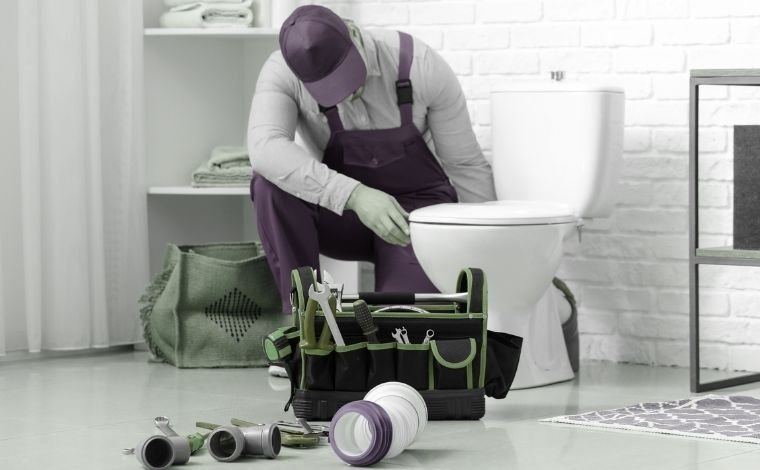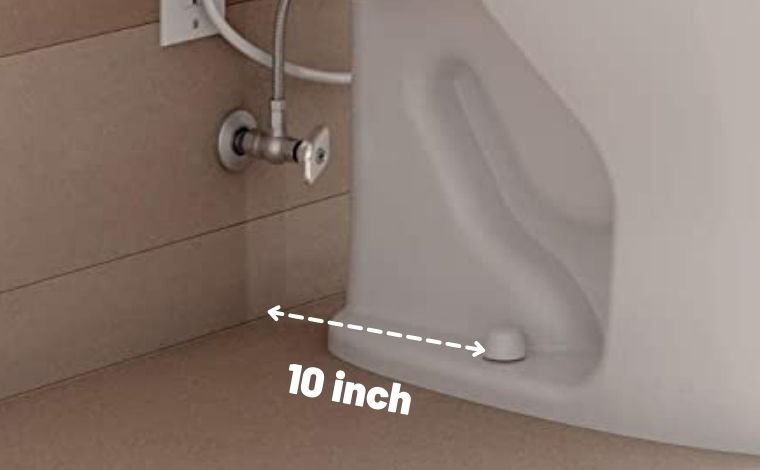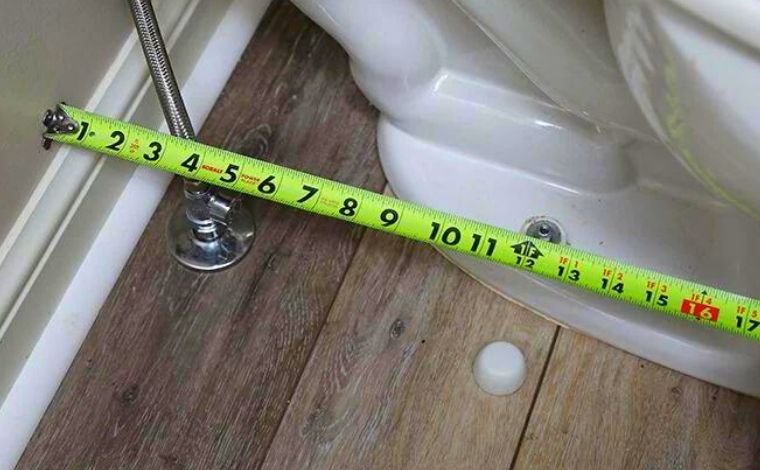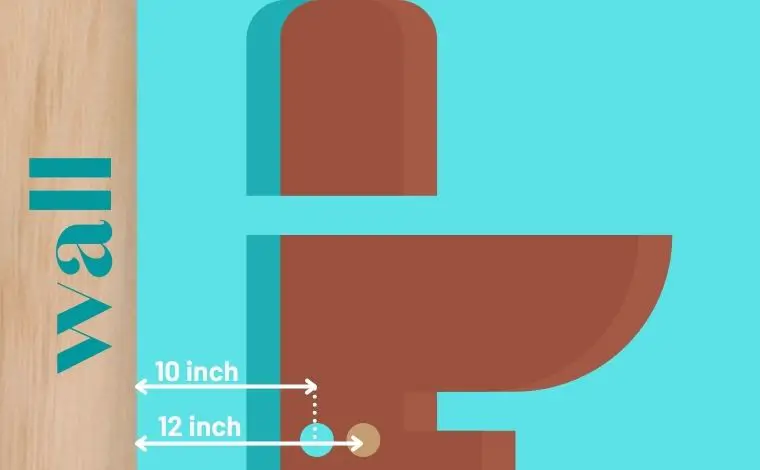When it comes to upgrading your bathroom, most people focus on style, color, or modern features like dual-flush systems and comfort-height seats. While those details are important, there is one technical measurement that often gets overlooked but determines whether your new toilet will even fit: the rough-in size.
The rough-in is the distance from the wall behind your toilet to the center of the drainpipe or mounting bolts. In residential plumbing, the most common standards are the 10 or 12 inch rough in toilet. At first glance, the difference might look small—just 2 inches—but in practice, it makes a big impact on how your toilet fits, performs, and lasts.
If your home was built decades ago, you may still have a 10 inch rough in toilet, since this was the standard for many older bathrooms. On the other hand, almost every new construction and renovation today relies on the 12 inch rough in toilet, which has become the industry standard due to its better performance, durability, and water efficiency.
Why does this matter to you as a homeowner or renter? Because buying the wrong rough-in size can mean wasted money, delays in renovation, or the frustration of returning a toilet that doesn’t fit your bathroom. Understanding the rough-in ensures you make the right purchase and avoid costly mistakes.
In this guide, we’ll explore the details of both 10 and 12 inch rough in toilets—what they mean, how to measure them, their pros and cons, and even how to replace one with the other. By the end, you’ll know exactly which option is best for your bathroom and lifestyle.
Understanding Rough-In Measurement
Before comparing the 10 or 12 inch rough in toilet, it’s essential to understand what the rough-in measurement actually is and why it matters so much.
What Does Rough-In Mean?
The rough-in is the distance from the finished wall (not the baseboard) directly behind your toilet to the center of the drainpipe or to the bolts that secure the toilet to the floor. This number determines the type of toilet that will fit in your bathroom space.

- A 10 inch rough in toilet has exactly 10 inches from the wall to the drain center.
- A 12 inch rough in toilet has 12 inches between the wall and the drain center.
While two inches may not sound like much, in bathroom layouts, it makes a major difference. Choosing the wrong size could mean your toilet either won’t fit properly or will leave gaps that affect both function and aesthetics.
Why the Measurement Is Important
- Proper Fit: Toilets must align with the drain opening, otherwise leaks and installation issues occur.
- Avoiding Wasted Money: Buying the wrong rough-in size often means returning the toilet and paying extra for new parts or adjustments.
- Future-Proofing: If you plan to renovate later, choosing the right rough-in ensures easy upgrades.
How to Measure Rough-In Correctly
- Place your measuring tape against the finished wall behind the toilet.
- Extend the tape to the center of the rear bolts that secure the toilet to the floor.
- If there are four bolts (two in front, two in back), measure to the center of the rear set.
- Ignore baseboards—measure only from the actual wall surface.
This number will tell you whether your toilet is a 10 inch rough in toilet or a 12 inch rough in toilet. In rare cases, you may encounter 14-inch rough-ins, but these are much less common.
Quick Tip
If you’re replacing an older toilet, don’t assume the new one will automatically fit. Even if the toilet “looks standard,” always take the measurement before buying. It takes just a few minutes and can save you from an expensive installation headache.
The 10-Inch Rough-In Toilet – Benefits and Limitations
The 10 inch rough in toilet is less common in modern homes but still holds value in certain situations. If your house was built several decades ago, chances are your bathroom was originally designed for this rough-in size. While most manufacturers today focus on the 12-inch standard, 10-inch models are still available for people who need them. Let’s look at why some homeowners still prefer this option and what drawbacks come with it.

Advantages of a 10-Inch Rough-In Toilet
-
Perfect for Small Bathrooms
If your restroom is compact—like a powder room or guest bath—a 10-inch rough-in is ideal. The shorter distance allows the toilet to sit closer to the wall, creating more usable space in the room. -
Space-Saving Design
Many city apartments, older homes, and small cottages benefit from the compact design of a 10 inch rough in toilet. It helps maximize every inch, which is critical in tight layouts. -
Convertible for Upgrades
With the right adjustments, such as an offset flange, you can replace a 10-inch toilet with a 12-inch model later on. This flexibility is helpful if you’re planning a bigger renovation in the future. -
Child-Friendly Use
Due to their slightly smaller profile, 10-inch rough-in toilets can feel more comfortable for children. Some families prefer installing them in a bathroom primarily used by kids.
Limitations of a 10-Inch Rough-In Toilet
While these toilets can be useful in certain conditions, they also come with significant drawbacks:
- Higher Price Point: Since 10-inch toilets are less common, they are often priced higher than their 12-inch counterparts. Limited demand drives up manufacturing and availability costs.
- Limited Design Options: You won’t find as many colors, styles, or advanced flushing systems in 10-inch rough-in toilets. Most modern innovations are made for the 12-inch standard.
- More Frequent Clogging: A shorter trapway often makes 10-inch toilets more prone to clogs. This can be frustrating if your household uses the bathroom heavily.
- Durability Issues: Older 10-inch models may lack modern features like glazed trapways or powerful siphon jets, making them less durable in the long run.
Where a 10-Inch Rough-In Still Makes Sense
If your bathroom space is extremely limited or if you’re renovating an older home where moving the drainpipe isn’t practical, a 10 inch rough in toilet may still be your best option. However, most homeowners today choose a 12-inch rough-in for its broader availability, affordability, and advanced features.
The 12-Inch Rough-In Toilet – The Modern Standard
When people shop for a new toilet today, most of the models they see in showrooms or online will be the 12 inch rough in toilet. This size has become the standard across North America and much of the world, and for good reason. It combines functionality, efficiency, and variety, making it the first choice for modern households.

Why the 12-Inch Rough-In Toilet Is So Popular
-
Widest Availability
Almost every major brand—Kohler, Toto, American Standard, Delta, and more—designs most of their toilets with a 12-inch rough-in. That means you’ll find hundreds of options in terms of shape, style, height, and color. -
Better Water Efficiency
The majority of WaterSense-certified toilets are made for the 12-inch rough-in. These models typically use 1.28 gallons per flush (GPF) compared to older 1.6–2 GPF models, helping you save on your water bill and contribute to environmental conservation. -
Advanced Features
A 12 inch rough in toilet usually comes with more advanced technology, such as:-
Dual-flush systems for water savings
-
Comfort height (ADA-compliant) bowls for easier sitting and standing
-
Powerful siphon jet flushing systems
-
Smart features like heated seats, bidet attachments, or touchless flushing
-
-
Durability and Performance
With a longer trapway, 12-inch toilets are far less likely to clog than older 10-inch models. This makes them a more reliable option for busy households with multiple users. -
Future-Proof Investment
Since this size is the industry standard, replacing or upgrading a 12 inch rough in toilet in the future will be easy. You won’t struggle with limited choices or high costs as you might with a 10-inch model.
Downsides of the 12-Inch Rough-In Toilet
Even though the 12-inch option is highly practical, it does have a couple of limitations:
- Requires More Space
Compared to a 10-inch rough-in, it needs slightly more clearance. If you have a very small bathroom, this may be a concern. - Not Convertible Back to 10-Inch
While a 10-inch rough-in can be upgraded to a 12-inch with the right fittings, the opposite isn’t possible. Once your bathroom is designed for a 12-inch rough-in, you cannot easily switch back.
Who Should Choose a 12-Inch Rough-In Toilet?
If you have enough space in your bathroom and want access to the widest range of modern toilet designs, the 12 inch rough in toilet is the obvious choice. It offers superior flushing power, water savings, comfort, and long-term reliability, making it the best solution for most households.
Comparing 10 or 12 Inch Rough-In Toilet – Key Differences
By now, you know the basics of each type, but when deciding between a 10 or 12 inch rough in toilet, the real question is: how do they compare in everyday use? Let’s break it down across several important factors.

1. Space and Bathroom Layout
-
10-Inch Rough-In: Designed for tight spaces, this toilet fits easily into compact bathrooms, powder rooms, and older houses with limited floor area. If every inch counts, this option saves valuable space.
-
12-Inch Rough-In: Requires slightly more clearance but works perfectly in standard or large bathrooms. It’s the universal choice for modern construction.
2. Water Usage and Efficiency
-
10-Inch Rough-In: Many of these are older models that use 1.6–2 gallons per flush (GPF), which can be wasteful by today’s standards. Some newer 10-inch models meet water-saving requirements, but options are limited.
-
12-Inch Rough-In: Almost all WaterSense-certified toilets are 12-inch rough-ins, consuming just 1.28 GPF without sacrificing flushing power. This makes them both eco-friendly and cost-effective over time.
3. Cost and Market Availability
-
10-Inch Rough-In: Since they’re less common, these toilets tend to be more expensive and harder to find. Selection is limited, so you may need to compromise on style or features.
-
12-Inch Rough-In: Because this is the industry standard, prices are competitive, and you’ll find a wide range of models in every budget—from basic two-piece toilets to luxury smart toilets.
4. Durability and Clogging Issues
-
10-Inch Rough-In: Shorter trapways increase the chance of clogs, especially in high-use households. They also tend to be less durable because fewer manufacturers focus on upgrading this design.
-
12-Inch Rough-In: Longer trapways and stronger flush mechanisms mean fewer clogs and better long-term durability. Most innovations in durability are aimed at 12-inch toilets.
5. Renovation and Future-Proofing
-
10-Inch Rough-In: Can be upgraded to a 12-inch using an offset flange, but that requires additional work.
-
12-Inch Rough-In: Already the standard, meaning future replacements will be simple, affordable, and widely available.
How to Replace a 10-Inch Rough-In with a 12-Inch Rough-In
-
Turn Off the Water Supply
Locate the shut-off valve near your toilet and turn it clockwise until the water stops flowing. Flush the toilet to drain the tank completely. -
Remove the Old Toilet
Disconnect the water supply line, unscrew the floor bolts, and carefully lift the toilet away. Remove the old wax ring and clean the area thoroughly to prepare for the new installation. -
Install an Offset Flange
An offset flange is the key tool that allows you to adjust the rough-in distance from 10 inches to 12 inches. Position it properly so the new toilet aligns with the waste pipe. -
Add a New Wax Ring
Place a fresh wax ring around the drain opening. This seals the connection between the toilet and the drainpipe, preventing leaks. -
Set the New Toilet
Lower your new 12 inch rough in toilet carefully onto the flange, making sure the bolts pass through the mounting holes. Apply gentle pressure to compress the wax ring for a tight seal. -
Secure and Reconnect
Tighten the floor bolts, reconnect the water supply line, and turn the water back on. Flush several times to ensure there are no leaks and everything is working smoothly.
Final Thoughts
There are actually four rough-in sizes available on the market—8, 10, 12, and 14 inches—but the two most common and practical choices are the 10 or 12 inch rough in toilet.
- A 10 inch rough in toilet is useful for small bathrooms or older homes where space is limited. However, it tends to be more expensive, harder to find, and more prone to clogging.
- A 12 inch rough in toilet has become the modern standard because it’s affordable, durable, water-efficient, and widely available in countless designs and features.
If you’re renovating your bathroom and have enough space, the 12 inch rough in toilet is usually the best long-term choice. It saves water, reduces clogging issues, and gives you the broadest selection of styles. On the other hand, if space is tight and moving plumbing lines isn’t an option, a 10 inch rough in toilet can still serve you well.
No matter which option you choose, always measure your rough-in before purchasing. A few minutes with a measuring tape can save you from buying the wrong toilet and facing costly installation problems. With the right choice, your bathroom upgrade will be comfortable, functional, and future-proof.
We are really lucky to have a hard-working, multi-skilled plumber on our team. Collin D. Gallegos, a professional plumber who has worked with us since 2012, is an expert in vent, septic, and drainage systems. He is a Certified Master Plumber and has worked on various commercial plumbing projects. He usually helps our readers resolve plumbing and pipe-related issues with a proper DIY troubleshooting and repair guide.